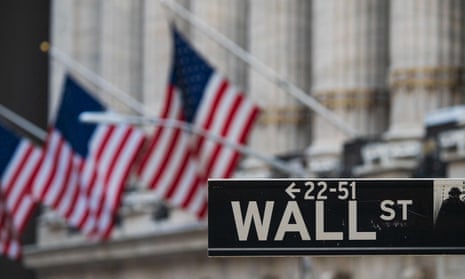Inflation in the US has jumped to the highest rate since 2008 as the world’s largest economy rebounds strongly from the coronavirus crisis.
The consumer prices index rose at an annual rate of 5% in May, up from 4.2% in April and the highest since August 2008, according to the US Bureau of Labor Statistics. Inflation has steadily climbed since January, when it was 1.4%.
Fears over rising prices in the US have gripped markets, with investors fearing that pent-up demand and supply chain bottlenecks would create inflationary pressures, forcing central bankers at the Federal Reserve to slow their stimulus programme.
But US stocks rallied on the news, with the S&P 500 touching a new high as traders anticipated that the inflationary surge would be temporary, allowing the Fed to put off tapering a bond-buying policy that has pumped money into global markets.
“US stocks rallied to a fresh record high after investors realised the punchbowl of stimulus is not going away any time soon,” said Edward Moya of trading platform Oanda.
Core inflation, which strips out volatile items such as food and energy, leaped to the highest level since 1992. It rose 3.8% year-on-year, up from 3% in April.
Other official data showed that the number of initial claims for jobless benefits fell to its lowest since mid-March 2020, when the first wave of Covid-19 hit. There were 376,000 initial claims for state unemployment benefits last week, a drop of 9,000 from the 385,000 recorded in the prior week, and a near 15-month low.
This continues the steady fall in jobless claims in recent months, since the rapid Covid-19 vaccination programme has allowed the US economy to reopen and stage a recovery.
The cost of used cars and trucks climbed 7.3% in May from April, accounting for a third of the increase in inflation. Prices were 29.7% higher than a year earlier. They have risen in recent months because of a global semiconductor shortage that has held back car production, pushing people to enter the market for second-hand vehicles instead.
Energy prices also rose, by 28.5% year-on-year, including a 56% jump in gasoline prices compared with May 2020, when demand slumped due to the pandemic.
The cost of flights, household furnishings, new cars, rental cars and clothing rose during May.
However, there was no need to panic about the jump in US inflation, said Ron Temple, the head of US equities at Lazard Asset Management. “Before hitting the panic button, investors should recognise that used cars, auto insurance, and air fares drove nearly half of the core CPI increase.
“These increases are all easily explained by depressed prices a year ago and the semiconductor shortage that has turbocharged used car prices. The next few months are likely to be noisy, and investors should focus on data this fall when schools are fully reopened and several million workers can rejoin the labour force.”
The S&P 500 hit a fresh record high of 4,249.74 after the inflation report, before easing back a little.
Alastair George, the chief investment strategist at the investment firm Edison Group, said: “There is a lot of debate about the spectre of fast-rising inflation pressuring central banks to raise rates, or an unwelcome bond market selloff.
“We believe the data is still very noisy and say more about the rapidity of the rebound in demand which is welcome, rather than any signal about the long-term outlook for inflation.”
